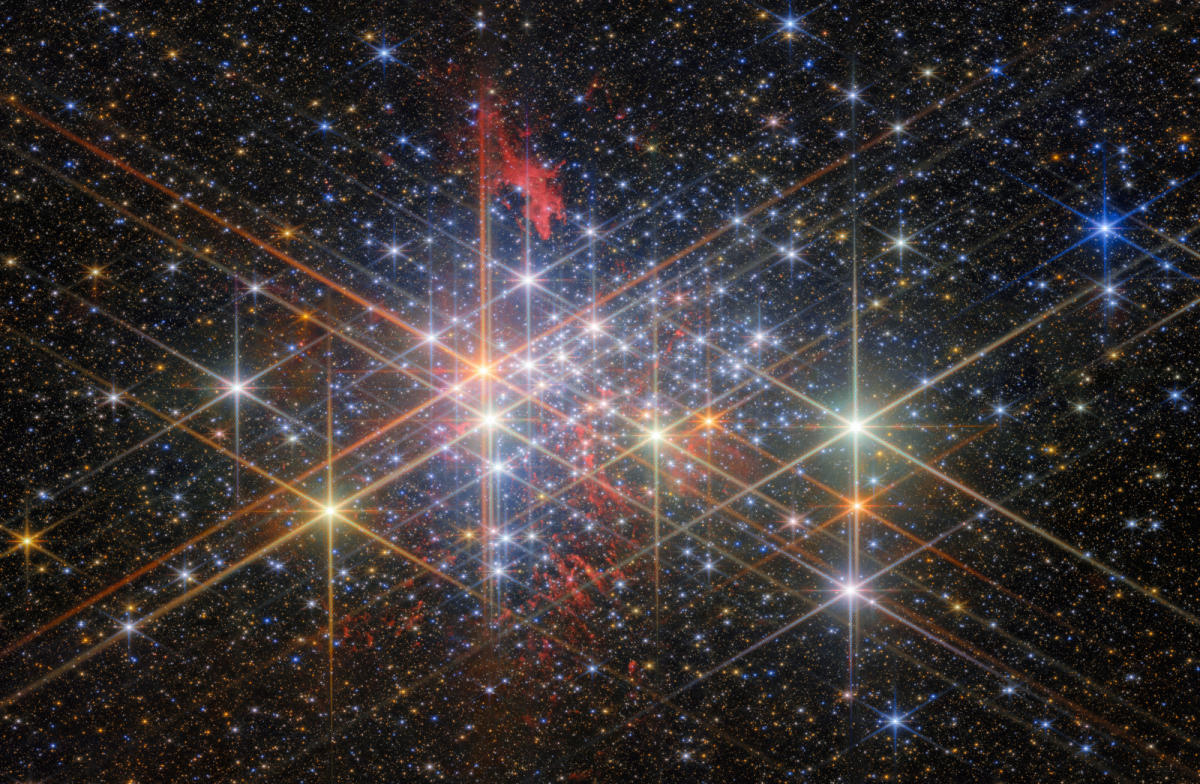Review sản phẩm
Hình ảnh lộng lẫy của tổ hợp sao siêu lớn nhất trong Dải Ngân Hà của chúng ta được NASA thể hiện
Hình ảnh lộng lẫy của tổ hợp sao siêu lớn nhất trong Dải Ngân Hà của chúng ta được NASA thể hiện
Kính viễn vọng không gian James Webb tiếp tục ghi lại những hình ảnh vũ trụ với độ rõ nét và chi tiết chưa từng có. Một trong những bức ảnh mới nhất mà nó chụp được là hình ảnh của “tổ hợp sao siêu lớn” mang tên Westerlund 1, nơi tập trung vô số thiên thể lấp lánh như những viên ngọc quý. Các tổ hợp sao siêu lớn là những cụm sao trẻ, có kích thước gấp hàng nghìn lần Mặt Trời của chúng ta, được tập trung trong một khu vực nhỏ.
Trong quá khứ, Dải Ngân Hà của chúng ta từng tạo ra nhiều tổ hợp sao như vậy cách đây hàng tỷ năm, nhưng hiện tại, Westerlund 1 là một trong số ít những tổ hợp sao siêu lớn còn tồn tại. Hình ảnh mới nhất từ NASA không chỉ cho thấy vẻ đẹp lộng lẫy của nó mà còn cung cấp những thông tin quý giá về quá trình hình thành và tiến hóa của các ngôi sao trong vũ trụ.
#NASA #JamesWebb #Westerlund1 #TổHợpSao #DảiNgânHà #ThiênVănHọc #KhámPháVũTrụ #KhoaHọc
The James Webb Space Telescope continues to capture images of space that are clearer and more detailed than what we’ve seen before. One of the latest images it has taken is of a “super star cluster” called Westerlund 1, and it shows an abundant collection of heavenly bodies, shining brightly like gemstones. Super star clusters are young clusters of stars thousands of times bigger than our sun that are all packed in a small area. Our galaxy used to produce more clusters billions of years ago, but it doesn’t churn out as many stars anymore, and only a few super star clusters still exist in the Milky Way.
Westerlund 1 is the biggest remaining super star cluster in our galaxy, and it’s also the closest to our planet. It’s located 12,000 light-years away, made up of massive stars between 50,000 and 100,000 times the mass of our sun within a region that measures six light-years across. Those stars include yellow hypergiants that are around a million times brighter than our sun, as well. Since the stars populating the cluster have a comparatively short life, scientists believe it’s only around 3.5 to 5 million years old. That’s pretty young in the cosmic scale. As such, it’s a valuable source of data that could help us better understand how massive stars form and eventually die. We won’t be around to see it, but the cluster is expected to produce 1,500 supernovae in less than 40 million years.
Astronomers captured an image of the super star cluster as part of an ongoing survey of Westerlund 1 and another cluster called Westerlund 2 to study star formation and evolution. To take the image, they used Webb’s Near-InfraRed Camera (NIRCam), which was also recently used to capture a gravitationally lensed supernova that could help shed light on how fast our universe is expanding.
Khám phá thêm từ Phụ Kiện Đỉnh
Đăng ký để nhận các bài đăng mới nhất được gửi đến email của bạn.





